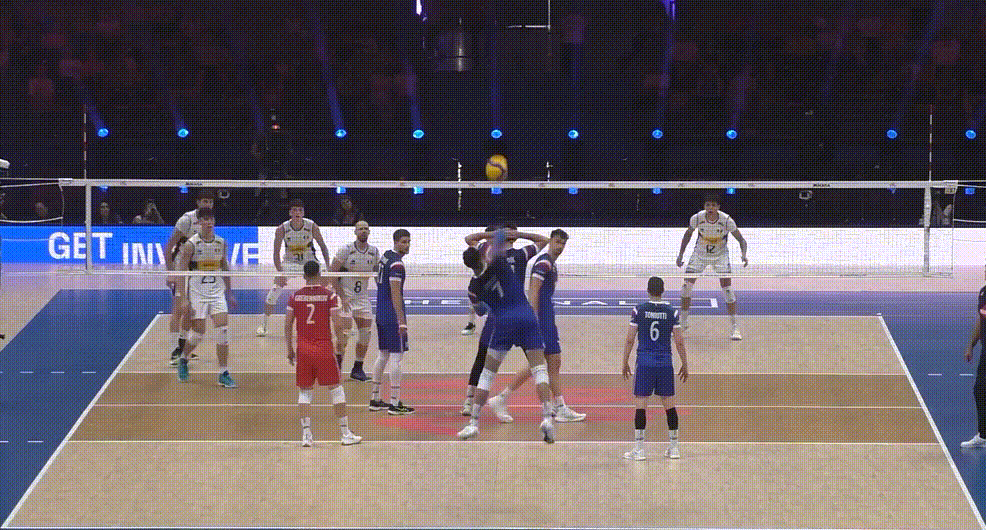On Tuesday I shared a detailed breakdown of attack footwork patterns for outside attackers when they don’t have to pass. Here’s another 5 clips, in quick gif format, with additional examples of this pattern. As always, feel free to share these as examples to your players. (Also: these gif-heavy posts sometimes play better by opening this post in your browser rather than your email app.)
Franklin
Let’s start with the reigning NCAA Player of the Year. Franklin has a pretty bread-and-butter 5-step shuffle here. I like how she shuffle at an angle so she’s not too far away. This puts her 2nd step “toes to the attack line” or a hair behind. It’s not uncommon to see normal-sized high school kids with their second steps much deeper than that flying in at the ball. This is a nice distance that allows her to step-close into the court (note this ball is contacted ~3’, maybe 2.5’ inside the antenna, not “all the way out") and jump UP to the ball not OUT to the ball. This gives her more access to the deep-5 corner.
Maintain Rhythm
Very similar footwork pattern here from Bottolo. And again, note that you have a super-dynamic 6’5” guy and you still see him toes to about 11’ and just inside the 2nd hash, so about 1 - 1.5’ outside the sideline. Your 5’7” high school girls don’t need to start their approaches 17’ deep to have space for an approach! And then notice how his jump is almost completely vertical- very little broad jump. This allows him to contact high with vision, which he then uses to chop off the edge of the block. (Also note this ball is also contacted 2-3’ inside.)
Another detail I like here is that he really controls the speed of his first step. He doesn’t come to a stop, that would mess up his rhythm, but he really slows down to a walk on this high pass off the net. Controlling the speed of the first step is critical and he does it well here.
Practice Footage
Keep reading with a 7-day free trial
Subscribe to Smarter Volley by Joe Trinsey to keep reading this post and get 7 days of free access to the full post archives.




